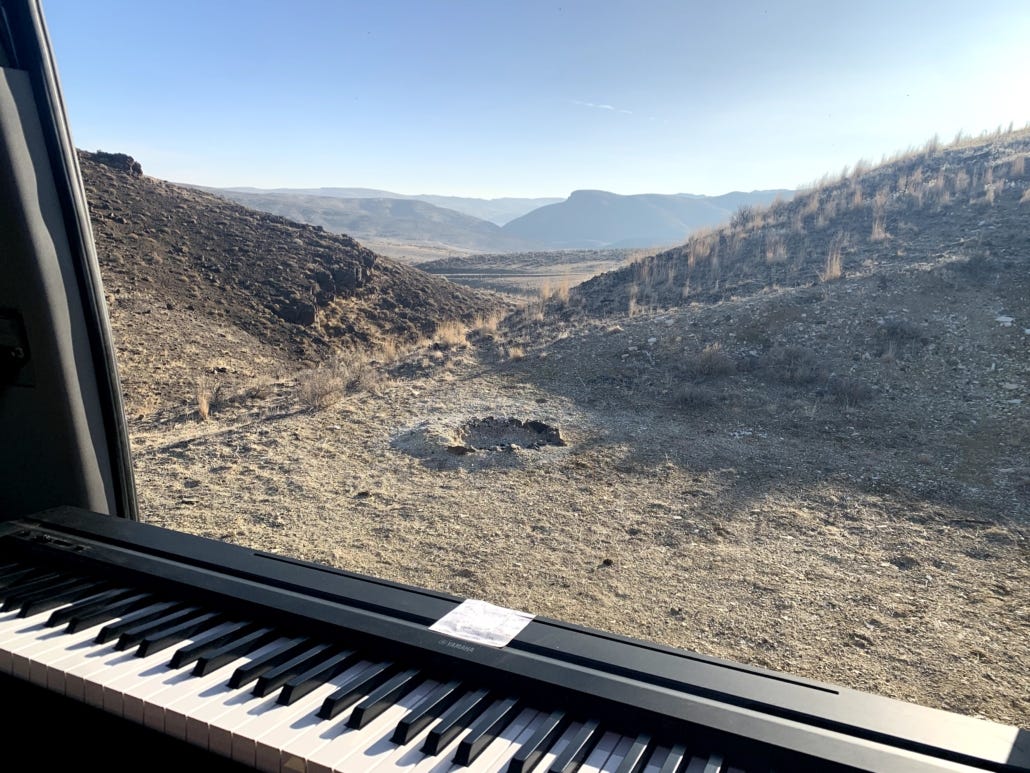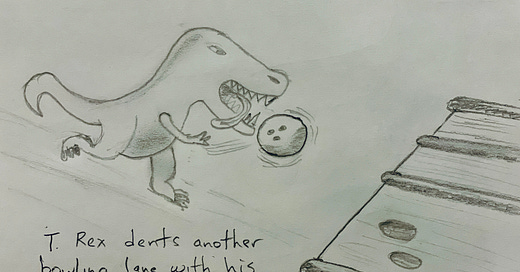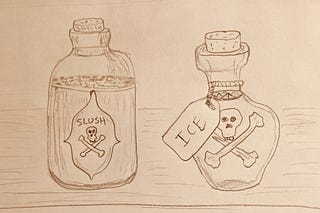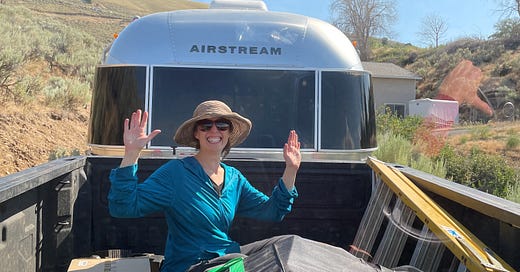
Creating a Solid Piano Practice Routine

In June 2020, Chelsea surprised me with a thoughtful birthday gift: a digital keyboard. Starting from scratch, I've managed to progress from “where the hell is middle C?” to "hey, this is going somewhere!"
When a reader (hi Kim) recently asked about my piano practice routine, I adapted my notes into this blog post. If you want to learn how to play or feel aimless/bored with your current piano practice, read on.
To develop my routine, I spent hours reading online, watching YouTube videos, and testing paid courses. I also received feedback from a piano instructor to help fine-tune things (and have since added live lessons - link skips to my piano teacher's info) after 10 months of self-guided study. Skip to those resources if that’s what you are looking for.
Before we jump into it, let me start by bragging establishing credibility, as well as showing what is possible. Thanks to consistent daily practice, in ~7 months, I'm now capable of doing the following:
Read sheet music (albeit slowly), including chords. Update July '21: I can now sight read in all 12 keys.
Play ~20 songs up to ABRSM grade 6 - pop, classical, jazz, some Christmas tunes...
Play minor and major triads (chords) in all 12 keys, plus their inversions.
Play common chord progressions in all keys (and recognize key signatures) - this makes learning new pop songs FAR easier.
Play all 12 major scales as well as their relative minor scale.
Play the harmonic and melodic minor scales in all keys, plus the modes (such as Dorian, Lydian, Mixolydian, etc).
Perform harmonic analysis (i.e. diagram the key and chord progressions, which makes learning songs far quicker)
Recognize that I have SO much more to learn...and also feel excited about my progress.
While I might specialize more someday, my current goal is the general ability to play classical, pop, or jazz piano songs, plus improvisation skills. Here is my approach to get there.
Even Adults Can Learn to Play the Piano
I talked about learning how to play for years. *insert excuses* Learning to play a new instrument in my late 30s sounded haaard.
All I can say is just start playing. Get a cheap digital keyboard (and headphones like these to save your marriage). Practice consistently. Reap the rewards.
Ten minutes of practice per day is 60 hours per year. Thirty minutes is 180 hours! I’d wager that you can find 10-30 minutes each day to learn a new skill. Trade some social media or Netflix time for piano. Your future self will thank you.
My Daily Piano Practice Routine
I aim for 30 minutes minimum per day of practice. My ideal is a one-hour session, which provides time for fundamentals plus practicing repertoire. (<--Music lingo. I sound so professional.)
Here's what I do.
Warm-up (all played with a metronome at a comfortable, no-mistakes pace). A few minutes of each of the below:
A few minutes of aural interval identification using the free website Teoria.
Hanon exercises - seemingly everyone recommends these for developing dexterity and finger strength. They felt alien (/impossible) at first, but helped me a lot and are a great warmup. (Note: I don't do these as frequently now that I'm spending more time on scales.)
Scale practice - Each day I pick one key (e.g. C) and play a bunch of scale variations: major, minor, harmonic and melodic minor, blues, and all seven modes (Ionian, Doran, Phyrgian, Lydian, Mixolydian, Aeolian, Locrian). Here’s a chart for correct fingering position across multiple octaves. (Stoked on scales? Jump to how to supercharge your scale practice.)
Arpeggio practice - Arpeggios appear in SO many songs. The one in Fur Elise inspired me to practice them every day and I went from fumbling around incoherently to playing them smoothly and (relatively) quickly.
Don’t repeat my mistake: get the fingering position right - white key position (e.g. D major) is different from the black keys (e.g. A flat). Here’s a correct breakdown.Octaves practice. Always with a metronome!
Chords practice - Practicing chords and inversions makes learning songs far easier - muscle memory for the win. I dig these two methods:
Practice chord shapes and playing them simultaneously per this Pianotes YouTube video. (Her channel is fantastic.) If you know nothing about chords, watch the entire video series.
Pick a key signature and play a progression (e.g. in D major, I-vi-V-IV, or D, bm, A, G). Play a broken chord with your left-hand and the full chord or inversion with your right.
Start slooow, like 50 bpm slow. It felt impossible at first, but after two months, I could play this literally with my eyes closed. Watch this Pianotes Youtube video to see what I mean.
Sight-reading practice - who doesn’t want to walk up to a piano, flip through a random book of music, and start playing away? #pianogoals This felt IMPOSSIBLE at first, but after a few months, I could sight read easy pieces in all 12 keys!
The key to sight-reading proficiency is the consistent practice of easy (to you) songs with lots of volume. Rather than finding endless new music, I use Sight Reading Factory, which generates infinite options for sight-reading. More details below! For chord sight reading practice, I love Sightreading.training. Update July '21: A year in, I can now sight read chords without looking at my hands. Keep practicing, progress happens.
Warmup done. Time to play songs! Here’s my approach:
Avoid wasting time on difficult pieces that stretch you TOO far. According to Liberty Park Music, aim for learning 1-2 pieces per week given 15-30 min per practice session (on repertoire). That’s ~1 hour of deliberate practice to learn a beginner song.
Learn songs one hand at a time, then combine left/right hands.
Play slowly and with a metronome. A speed allowing for zero (or very few) mistakes is ideal.
Learn one musical “phrase” at a time (say 2-4 bars). Smaller chunks of info stick better in our brains.
When mistakes start happening, it’s time to a) slow down or b) take a break/quit for the day.
Dream a little! I have a goal list of harder pieces, but avoid beating my head against them.
Infinite techniques exist beyond this. However, we don’t need to get fancy. Build a bulletproof foundation and launch from there. Even professionals practice using the above methods (modified for their needs, of course).
By the way, dig these kinds of posts? Sign up for the free 2x/month Traipsing About newsletter for music talk, creativity and outdoor adventures!
If I Did It Again
If I started again, I'd modify two key aspects of my approach:
Learn basic music theory out of the gate to allow quickly understanding a song’s structure rather than simply memorizing each note/chord. This makes learning songs SO much faster.
Play easier songs. I wanted to play “hard” songs because they sound more beautiful. (Ok, I still do.) This resulted in less-efficient practice on relatively difficult songs that were above my pay grade. More on this below.
Piano Tools and Resources
What specific tools do I use? Read on!
Sight-reading proficiency
For basic note recognition: the Notes Teacher app
Sight-reading practice:
Sight Reading Factory - SO helpful. Only $35/year and my preference for simultaneous treble/bass line practice.
Sight Reading Trainer (free and excellent for chord practice with live feedback if you plug a digital piano into a computer)
Music theory
The Really Useful Piano Poster - lists common scales and chords for all 12 keys. I put it on the wall behind my piano.
For ear training and basics, I enjoyed a (free) Berklee School of Music class on Coursera called Developing Your Musicianship.
For all the music theory goods, Jason Allen’s zero-to-hero music theory course on Skillshare is an accessible, complete course adapted from his college courses. Highly recommended.
Programs and additional services
Musescore - access to a huge database of sheet music for a few bucks a month.
Liberty Park Music - a progressive series of classes, all taught by classically-trained pianists. Also, a great way to survey the work of different composers.
Piano With Jonny - a fantastic way to learn blues and jazz piano. Fully comprehensive if you're just starting out. His energy is contagious!
Playground Sessions - a comprehensive course complete with software for learning the piano. I used this a lot, especially initially.
Live Online Lessons (update 4/16/2021): After 10 months of solo effort, I added live online lessons to the mix. My teacher is a Brazilian named Antônio Boabaid, a performing classical pianist who is fantastic. I can't BELIEVE how helpful his advice on technique and practice methods is.
Drop him a line! (No benefit to me.) His Whatsapp is +55 48 9181 9164 and you can see his piano skills here on YouTube. Beyond the actual instruction, he's affordable, friendly, and fun to work with.
Time to Get Started
All I can say is this: if you've ever thought about playing piano, start now. Learning to play is one of the most satisfying projects I've tackled in a long time and I look forward to many more years of honing my skills and creating beautiful music.
Here's to taking the leap and getting started. Our future selves will thank us for the time we put in now!
Bonus Info
For more detailed info on sight-reading, turbocharging scale practice, and repertoire practice techniques, read on!
Learning to Read Music
When I started seven months ago, I couldn’t read sheet music or play anyyything. I read music like a kid learning to read Dr. Seuss: “T...he THE caaaa...t CAT.” It felt impossible...until it wasn’t.
Now I can recognize chords (which I’d equate to words vs. individual letters). That’s evolving to musical phrases (sentences) and SOMEday I’ll be able to play relatively complex songs off the cuff.
Related to that, plus other info, here is paraphrased advice from an instructor at Liberty Park Music:
Sight-Reading
The key with sight-reading is continuity and volume. Read a lot and practice keeping the momentum up even if you start missing notes.
Gather a lot of music that's significantly easier than the music you're capable of playing (even as easy as children's learning pieces). Spend 5-10 minutes at the beginning of each practice session sight-reading through it.
Set a metronome to a relatively slow tempo, and try to stick with the metronome count, even if you start flubbing notes. You can go back and re-read one or two times, but after that, you're starting to learn the music, so it's time to move on.
Playing Scales
If you want to supercharge your scale speeds, the "3-Speed Scale Exercise" is fantastic:
For this exercise, choose a slow metronome speed, say between 60-70bpm. You'll first play a two-octave scale in 8th notes against that beat.
Then, decrease your note value to triplets, playing a three-octave scale.
Finally, drop your note value one more time to 16th notes (so, 4 notes per beat), and increase your octave count to 4.
Start low on the keyboard so that by the time you get to playing four octaves of 16th notes, you're not flying off the top of the keyboard. You can play any scale like this, and as you get better simply increase the metronome count.
Another nice thing about this exercise is that not only does it give you a stepwise method of increasing your speed, it also teaches you rhythmic control at slower speeds, which is often underrated. We have such an inclination to play fast all the time at the piano, but part of what separates the great from the less great when it comes to piano playing is control and precision at slower speeds as well as higher ones.
Repertoire Practice
Finding the right level of difficulty to keep you improving your skills while not overwhelming your capabilities can be challenging, especially if you're essentially doing things on your own. In general, you should aim for a blend of repertoire difficulty, but you should never let yourself get stuck on something that's too challenging.
Collegiate piano students learn 1-2 movements per week of (relative to their skills) medium difficulty repertoire. Until you're a little more comfortable with judging the potential difficulty of a piece, you'll want to give preference to a more manageable difficulty level.
To help you know if you're on track at a good difficulty level, you should be able to learn at a rate of about 1-2 pieces per week with an average of 4 days of practice at 15-30 min per practice session (on repertoire). I'd recommend aiming for a difficulty level that allows you to achieve this rate, instead of concentrating for a longer period on something harder.
DO have a list of "goal" pieces. These are pieces that you really want to be able to play that are probably too difficult for you to learn efficiently at this time. This will give you a long-term set of goal trajectories, which can help you focus on what you work on now.
And that...is truly the end. Best of luck in your piano endeavors!









